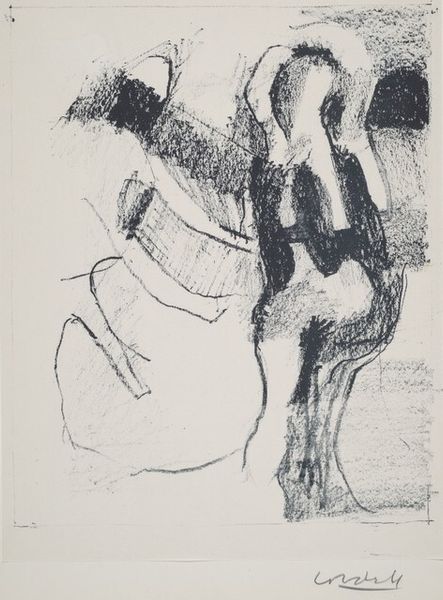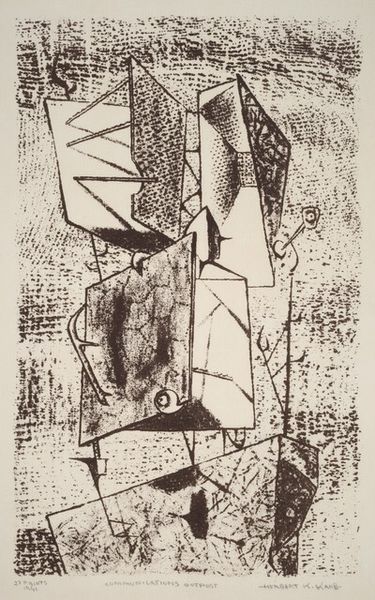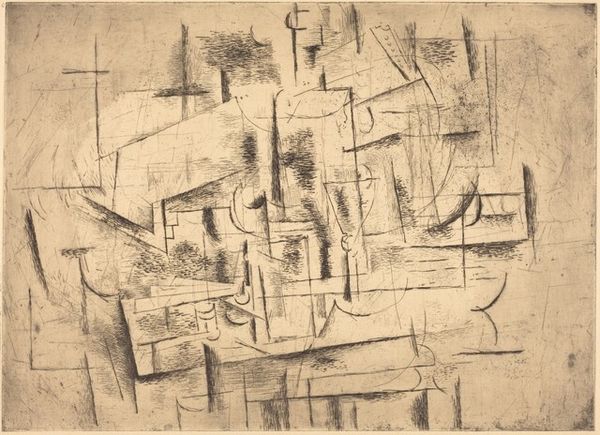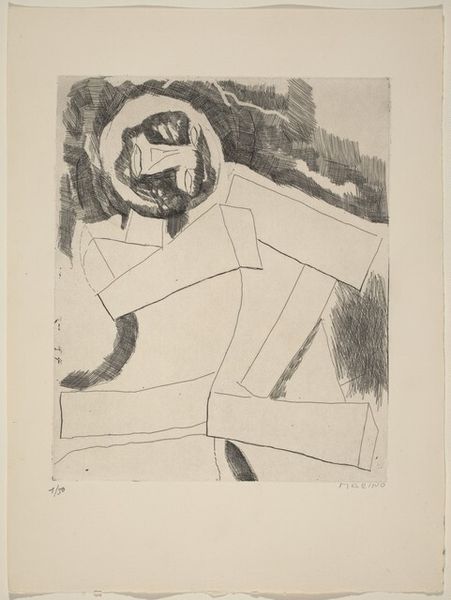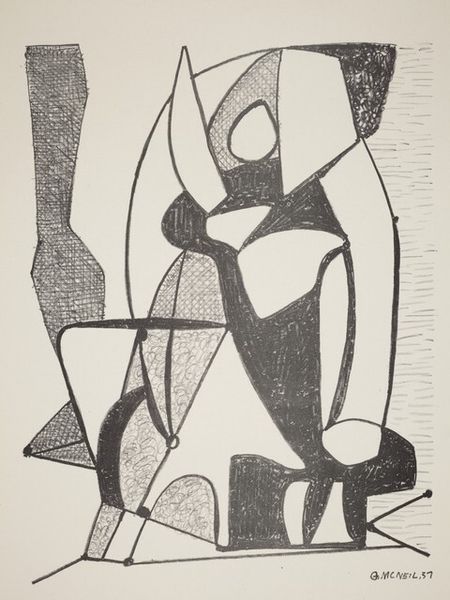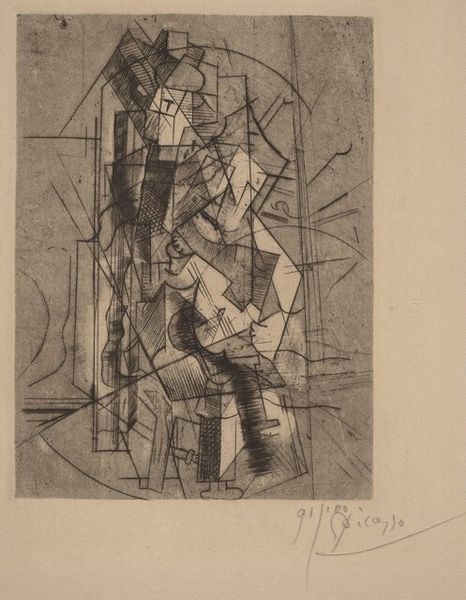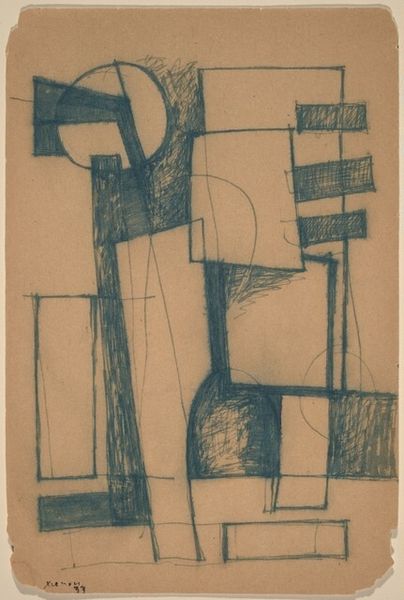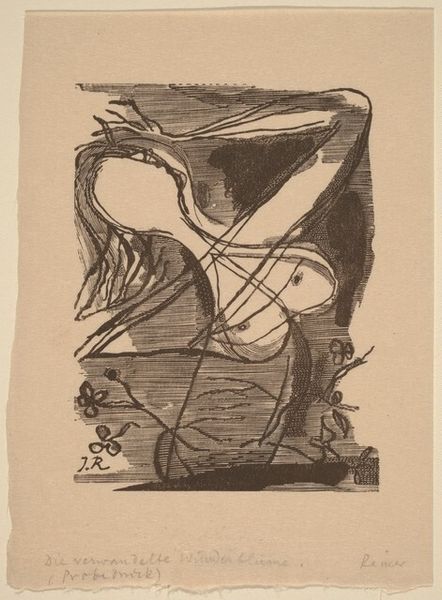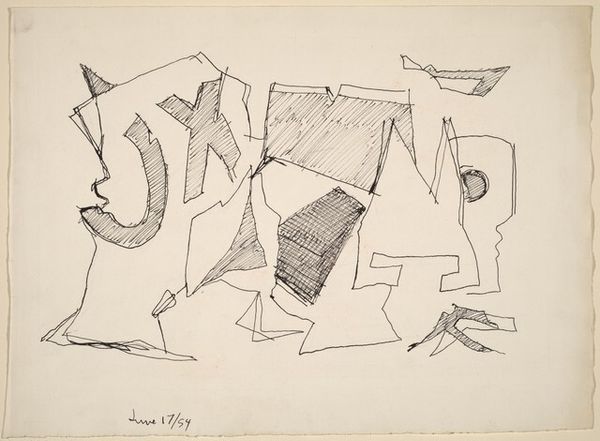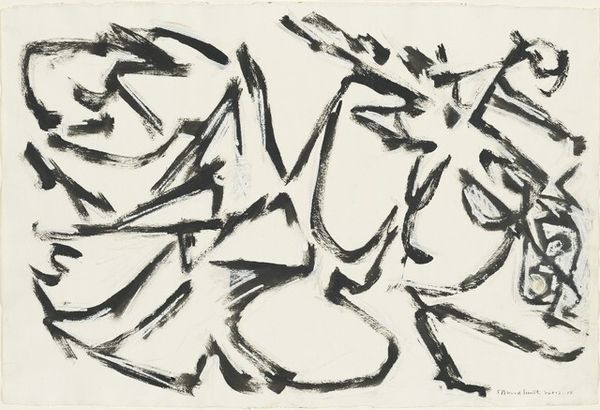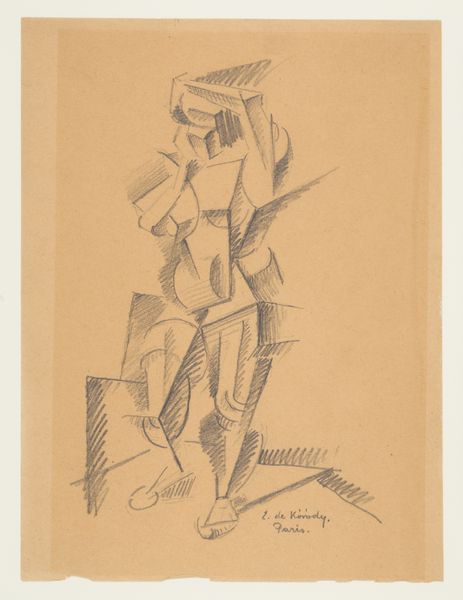
drawing, print, intaglio, ink
#
drawing
#
cubism
# print
#
pen sketch
#
intaglio
#
figuration
#
ink
#
geometric
#
line
Copyright: National Gallery of Art: CC0 1.0
Curator: Welcome. Here we have Ossip Zadkine’s print, "Two Figures". It's rendered with intaglio and ink. What are your immediate thoughts on the piece? Editor: Stark, fragmented. There’s a definite tension between the geometric shapes and the attempt to represent organic human forms. The heavy use of line suggests anxiety or instability, perhaps? Curator: That's an astute observation. Notice how Zadkine employs Cubist principles; he breaks down the figures into geometric components, fracturing their forms across the picture plane. The interplay of line, texture, and the lack of color are all meticulously controlled. Editor: How might this fit into the historical context of early 20th-century art? Did the anxieties reflected through its Cubist visual vocabulary correlate with broader social tensions and shifts, particularly within Europe? Curator: It absolutely did. Many artists were grappling with rapid industrialization, urbanization, and, of course, the looming shadow of war. Cubism was a revolutionary way to challenge traditional representation, and perhaps reflected the shattering of old orders. Note also how the angular forms almost mimic machine parts. Editor: Indeed. I think these jagged contours could symbolize not only an inner psychological tension, but also societal ones related to the dehumanizing effects of industry on people. Curator: I appreciate that you pick up on the feeling of unease; the relationship between form and content cannot be dismissed. But ultimately the abstract structure, the intentional dismemberment and re-assembling is a fascinating demonstration of semiotics in action, and that is a valuable perspective regardless of social context. Editor: True, but an entirely apolitical assessment might overlook ways in which this formalism communicated something resonant about Europe to the wider viewing public. Still, an art's beauty certainly endures regardless of interpretation. Thank you, it’s a lot to reflect on! Curator: And thank you. A thorough examination always includes varied lenses to gain deeper understandings.
Comments
No comments
Be the first to comment and join the conversation on the ultimate creative platform.
